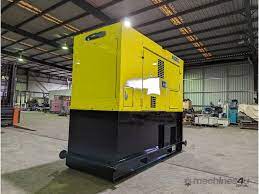Introduction to Geothermal Energy
Geothermal energy represents a vast, underutilized reservoir of renewable power sourced directly from the Earth’s heat. Consisting of both shallow ground heat and deeper, more intense energy stored in hot rocks or liquids, geothermal resources present a constant and reliable source of energy. As the urgent need for sustainable energy solutions persists, the importance of geothermal energy surges, coming into sharper focus as a means to mitigate climate change and supply baseload power in a transitioning energy landscape.
The current state of geothermal energy extraction heavily relies on existing technology and capabilities to access natural geothermal reservoirs. These reservoirs, typically found at tectonic plate boundaries or hot spots, provide steam or hot water that can be harnessed for electricity generation or direct heating applications. However, the reach of geothermal exploitation is somewhat limited by both the geographical spread of these naturally occurring resources and by the technological limitations of tapping into them.
As our technological capabilities evolve, so too does the promise of accessing untapped geothermal resources which could exponentially increase the availability of renewable energy worldwide. It is within this context that the geothermal drilling rig gains significance, heralding a future where enhanced energy extraction could be made possible through the innovation of advanced drilling platforms.
The Limitations of Traditional Drilling Rigs
Conventional drilling challenges present substantial hurdles in the geothermal industry. Traditional drilling rigs, designed primarily for oil and gas extraction, often struggle with the tough, high-pressure, and high-temperature environments characteristic of geothermal reservoirs. These rigs also typically have limited depth capabilities, which means they cannot always reach the deeper, more energy-rich zones of the Earth’s crust.
Furthermore, environmental and economic factors compound the limitations associated with traditional rigs. High emissions, noise pollution, and land disturbance are environmental concerns related to drilling that communities and regulators increasingly scrutinize. Economically, geothermal projects often face high upfront investment costs due to the extensive research and drilling required, putting them at a disadvantage when compared to other more accessible energy sources.
Acknowledging these limitations is key to understanding why the push for advanced drilling rig technology is so crucial. Addressing these challenges means not only improving the efficiency and efficacy of geothermal energy extraction but also ensuring such practices are environmentally friendly and economically viable.
Advances in Drilling Rig Technology
Revolutionary innovations in design are setting the stage for the next generation of geothermal drilling rigs. Enhanced mobility, modularity, and adaptability characterize these state-of-the-art machines, enabling them to navigate difficult terrains and begin operation more swiftly than their conventional counterparts. The objective is to reduce set-up time and increase the efficiency of drilling operations, targeting deeper and hotter geothermal resources with unprecedented precision.
Material improvements for high-temperature drilling are among the most crucial advancements. New materials are being engineered to withstand the harsh downhole environments of geothermal wells, where temperatures can soar and traditional materials fail. The development of heat-resistant drilling heads and components fabricated from robust alloys and composite materials promises to extend the lifespan of drilling equipment, reduce maintenance costs, and minimize downtime, all of which are essential for cost-effective geothermal energy production.
These advancements are not only a testament to human ingenuity but also an essential step towards more sustainable and widely available geothermal energy. With advanced drilling technologies that can endure extreme conditions, we stand on the precipice of a new era in geothermal energy extraction.
Enhanced Geothermal Systems (EGS)
EGS represents a burgeoning field in renewable energy that aims to expand the potential of geothermal power by artificially creating reservoirs in hot dry rock formations. This process involves injecting water into the rock to generate steam, which is then drawn to the surface to drive turbines for electricity generation. EGS technology has the capacity to dramatically increase the availability of geothermal resources, as it does not rely solely on natural reservoirs.
The role of advanced drilling rigs in EGS is transformative. These rigs enable operators to reach greater depths and create more precise fractures within the rock, thus maximizing the efficiency of the heat extraction process. By fracturing the rock at specific locations and orientations, advanced rigs amplify the effectiveness of heat exchange between the rock and the water, a pivotal factor in the success of EGS.
The implementation of forward-thinking EGS methodologies, abetted by advanced drilling rigs, could unlock vast new energy potentials—sufficient to supply a significant portion of global electricity demand. This underscores the indispensable nature of advanced drilling technology in the future maturation and expansion of geothermal energy.
Robotics and Automation in Geothermal Drilling
The application of robotics in geothermal drilling is another leap forward towards modernizing extraction methods. Robots can perform tasks such as pipe handling, assembly, and monitoring with precision and unfaltering endurance, taking over repetitive and hazardous duties traditionally carried out by human workers. This automated assistance not only bolsters safety standards by reducing human exposure to risk but also streamlines operations, leading to increased productivity.
Benefits of automation in safety and efficiency are considerable. Automated drilling systems can operate continuously, maintaining optimal performance without the fatigue-related decline that affects human workers. Moreover, the precision of robotics helps minimize errors and the need for corrective measures, which can be costly and time-consuming. Such advancements may also extend to other aspects of geothermal operations, from preliminary site assessment to continuous reservoir management.
Robotics and automation, consequently, are set to play a defining role in the future of geothermal energy. By enhancing safety and efficiency, these technologies support the scaling up of geothermal operations, making it an even more attractive option in the renewable energy portfolio.
High-Precision Drilling Techniques
Directional drilling innovations have opened up new possibilities for the geothermal industry. Unlike traditional vertical drilling, directional drilling allows for controlled deviations in the drill path, enabling access to resources that would be otherwise unreachable with straight boreholes. This versatility facilitates the exploration and development of geothermal fields with complex geological characteristics, enhancing the productivity of each well and the overall output of a geothermal project.
Real-time monitoring and control systems are instrumental in implementing high-precision drilling techniques. Sensors and communication technologies affixed to drilling apparatus relay crucial information about downhole conditions, such as temperature and pressure, back to the surface. Operators can then make instant adjustments to the drilling process, optimizing it for the encountered geology. This heightened level of control maximizes energy extraction efficiency while minimizing resource waste and environmental impact.
Such precision and adaptability help mitigate several challenges associated with geothermal drilling, ensuring that the energy harnessed from beneath our feet is done in the most effective way possible. Through the advancement of high-precision drilling techniques, the geothermal industry is poised to become a cornerstone of the renewable energy landscape.
Financial and Economic Considerations
The cost-benefit analysis of new rig technologies is a critical step towards understanding the economic feasibility of contemporary geothermal projects. Advanced rigs, with their enhanced capabilities, come with substantial upfront costs, but they also offer long-term savings and heightened returns on investment. Reduced operational costs, higher efficiency, and increased project lifespans are among the financial incentives that balance out the initial expenditure.
Funding and investments in geothermal energy projects are crucial for continued innovation and development. Financial backing from government grants, private equity, and green bonds, among other sources, can alleviate the barrier of the high capital costs typically associated with geothermal ventures. These investments not only bolster the development of advanced drilling rigs but also support the underlying infrastructure and research necessary for the continued growth of geothermal energy.
It is hence imperative that economic measures encourage the adoption of advanced technologies in geothermal drilling. Such incentives would accelerate the transition to cleaner energy while also positioning geothermal energy as a more competitive player in the global energy market.
Environmental Impact and Sustainability
Reducing the environmental footprint of geothermal drilling is central to its acceptance as a true green energy source. Modern drilling rigs aim to do just that by incorporating features designed to minimize disruption to the surrounding landscape and ecosystems. Quieter operation, smaller rig footprints, and reduced emissions are just a few examples of how these rigs are engineered with environmental considerations in mind.
Achieving sustainable geothermal energy production extends beyond environmental friendliness, encompassing the responsible management of the resource over its lifecycle. Advanced drilling rigs, equipped with better tracking and monitoring systems, help ensure that geothermal reservoirs are not overexploited, preserving their longevity and capacity for regeneration.
The integration of environmental sustainability into geothermal drilling operations solidifies this energy source’s role in a future powered by renewable energy. With technology that respects both the Earth’s resources and its ecosystems, geothermal energy can be harnessed indefinitely, providing a blueprint for environmentally sustainable energy practices.
Case Studies: Success Stories and Lessons Learned
Notable geothermal projects using advanced rigs serve as exemplars within the industry, showcasing the potential of next-generation technology to overcome obstacles and bring projects to fruition successfully. These endeavors highlight the efficiency gained through innovations, from increased drilling speeds to enhanced resource extraction, setting benchmarks for future projects.
Insights from field experiences become intrinsic to the continuous improvement and refinement of geothermal technologies. Operators learn to navigate intricacies of local geology, adapt to unforeseen challenges, and optimize operations, feeding this invaluable knowledge back into the technology development cycle. These practical experiences are a treasure trove of information for other developers and stakeholders in the geothermal sector.
By examining real-world implementations of advanced drilling rigs, the industry can distill actionable wisdom to enhance subsequent project designs, refine strategies for risk management, and evolve business models to better capture the potent energy resting just beneath our feet.
The Future Outlook and Challenges Ahead
Predicted trends in geothermal extraction suggest an embracing of innovative practices as core components in the future energy mix. Increased emphasis on sustainability and the need for stable energy sources are likely to elevate the importance of geothermal. Moreover, advancements in EGS and deep-drilling technologies may unlock new geothermal frontiers, bolstering the role of geothermal energy in global electricity production.
Overcoming barriers to adoption and innovation require concerted efforts from diverse stakeholders. Technical, regulatory, and financial hurdles must be navigated strategically to facilitate widespread uptake of advanced drilling rigs and techniques. The road ahead is paved with challenges, but the promise of clean, reliable, and virtually inexhaustible energy from the Earth’s depths is an irresistible reward, justifying the journey.
In conclusion, the future of geothermal energy extraction is being reshaped by the arrival of advanced drilling rigs capable of tapping into the heart of the planet’s energy. The collective push toward achieving greater depths, precision, and sustainability in geothermal drilling not only secures a place for geothermal energy in a low-carbon future but also sets a precedent for the type of ingenuity required to address the energy challenges of tomorrow. As we refine our tools and methods, the geothermal drilling rig column stands tall, a beacon of renewable potential and a testament to human innovation in the pursuit of a cleaner, more sustainable world.





